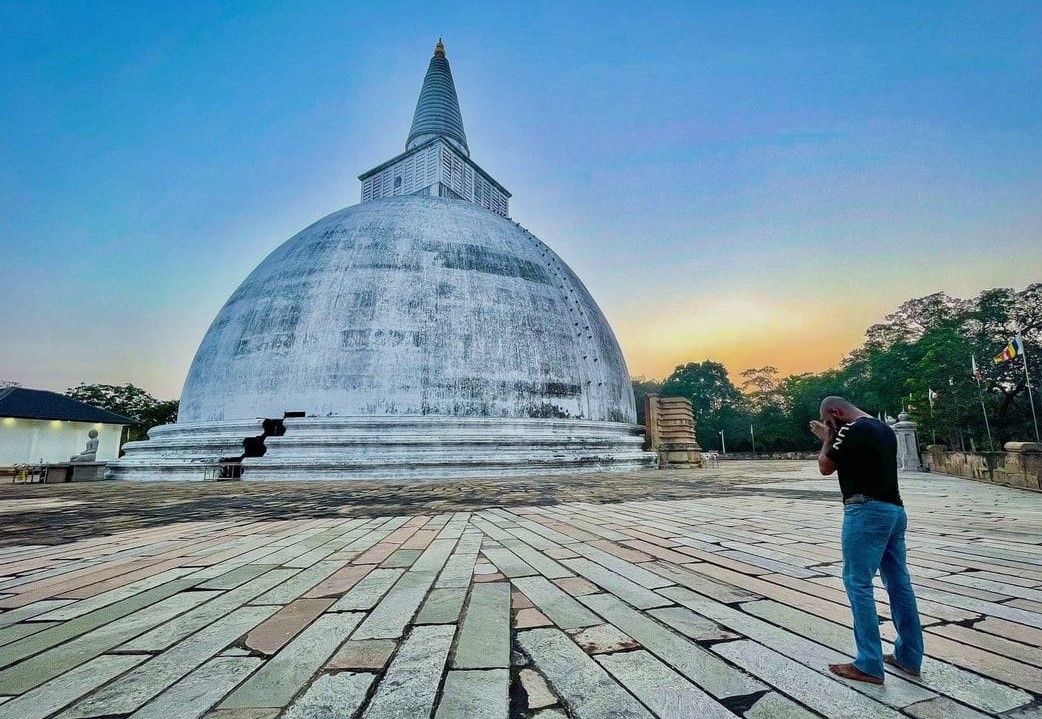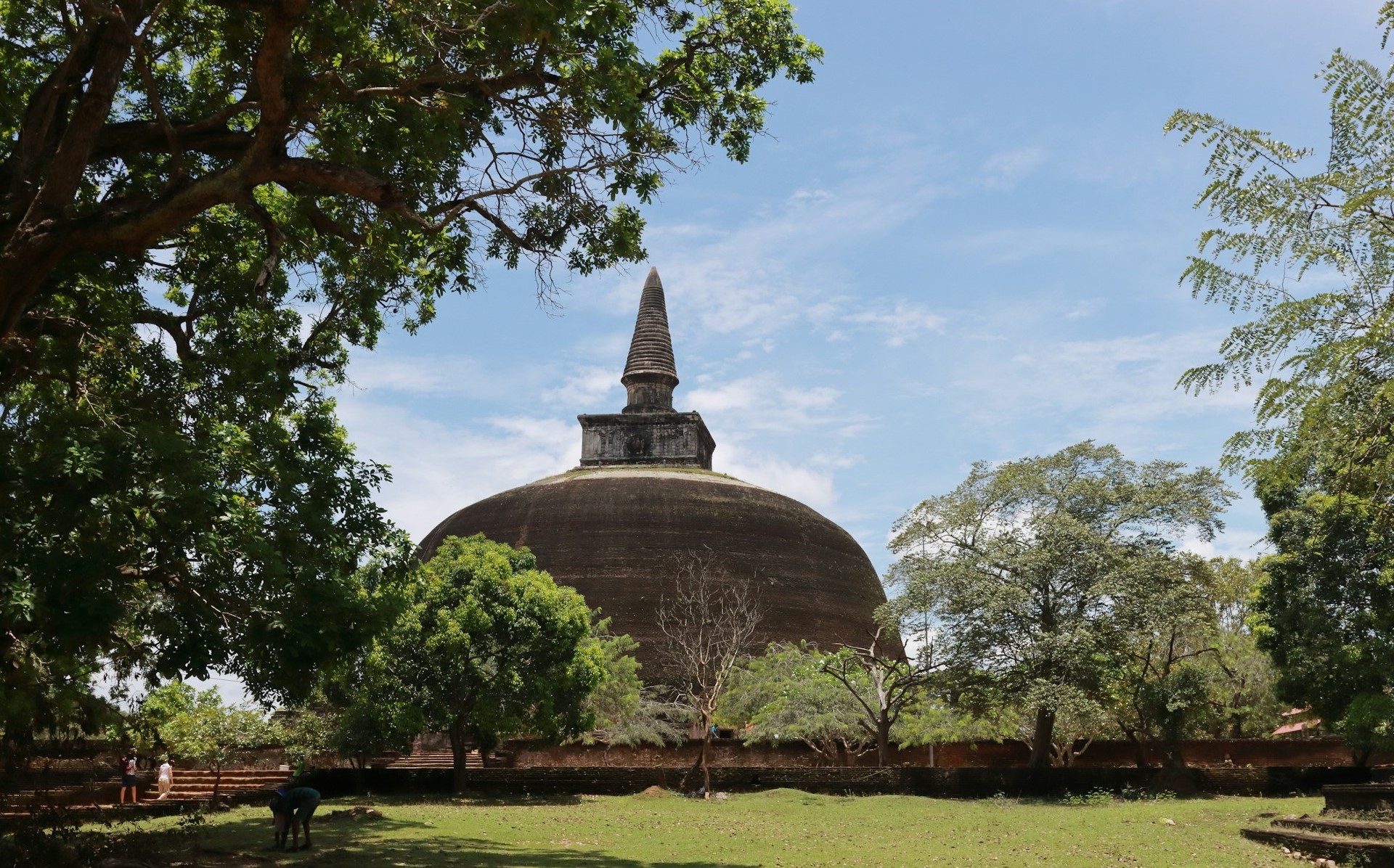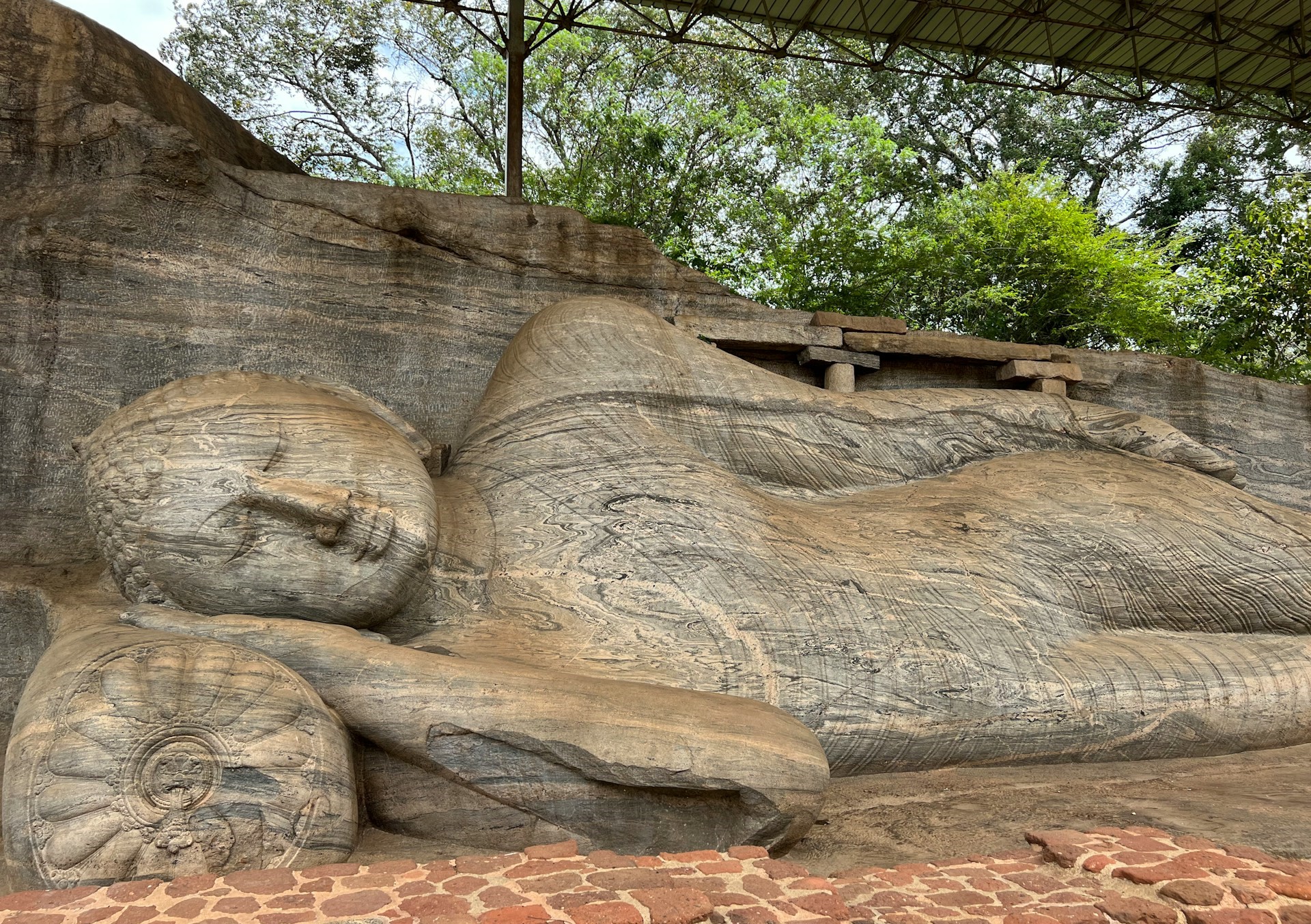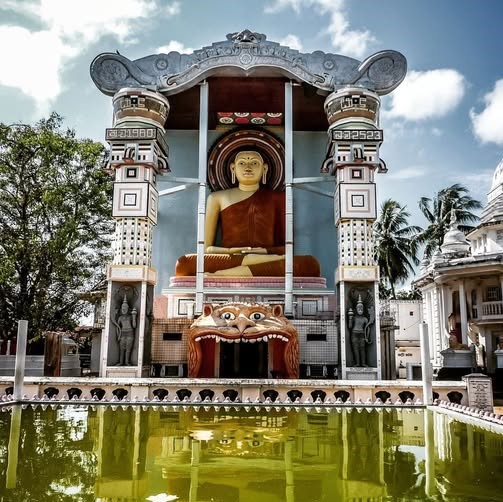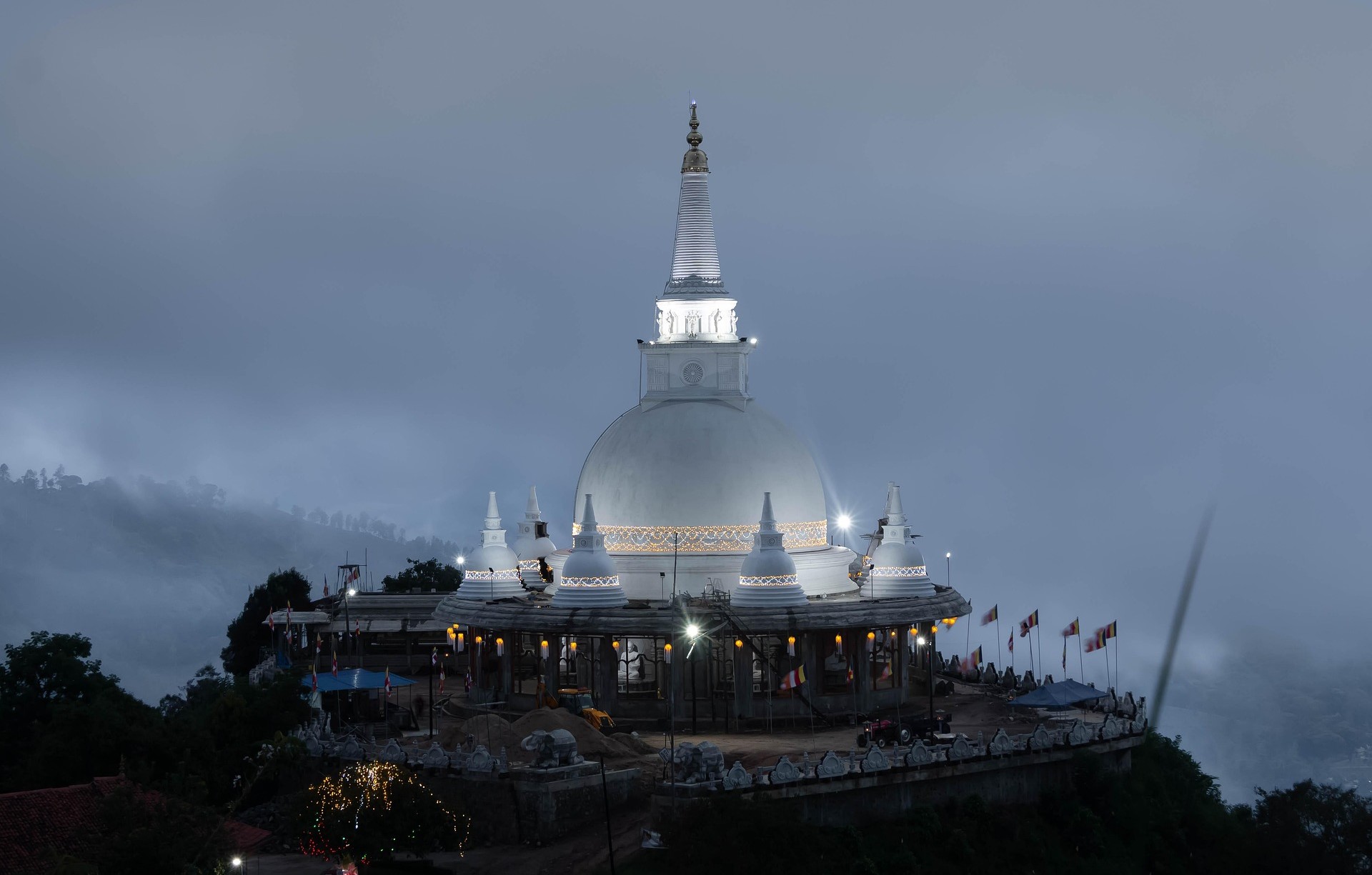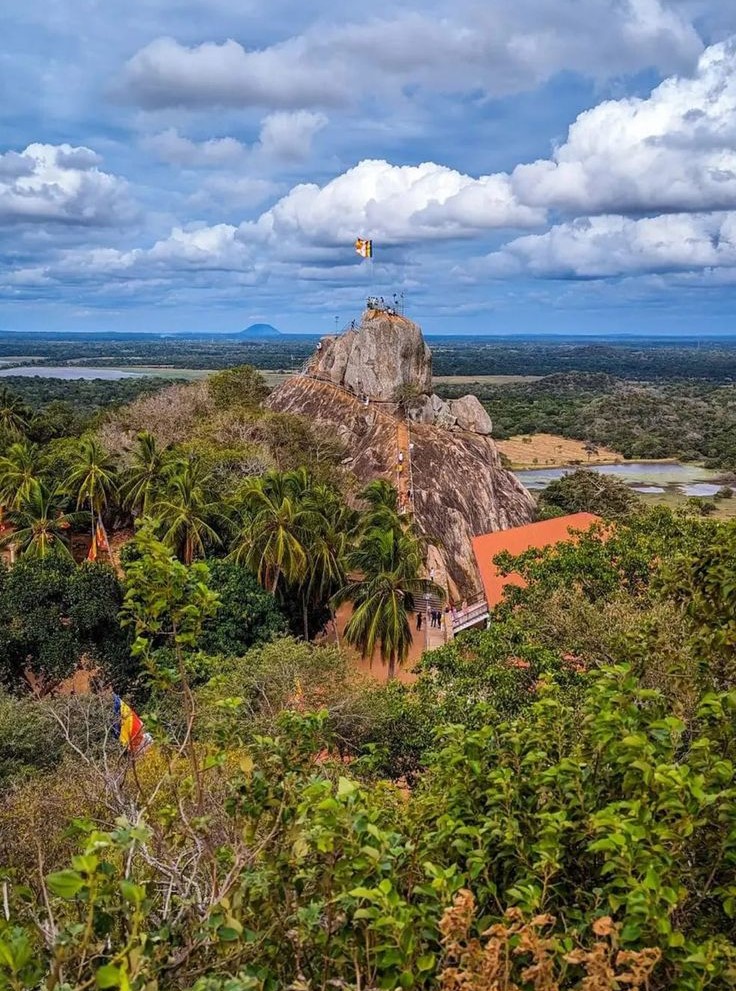Ranmasu Uyana: The Enchanting Royal Park of Anuradhapura
Ranmasu Uyana, or the Royal Park, is a stunning ancient garden located in the sacred city of Anuradhapura, Sri Lanka. This historical site, once reserved for royalty, is famous for its serene natural beauty, ancient water management system, and mysterious Sakwala Chakraya (Star Gate)….
Mirisawetiya Temple: A Sacred Gem in Anuradhapura
The Mirisawetiya Temple, located in the heart of the ancient city of Anuradhapura, stands as one of Sri Lanka’s most iconic Buddhist landmarks. Renowned for its religious significance, historical value, and architectural beauty, this ancient stupa is a must-visit destination for pilgrims and history…
Rankoth Vehera in Polonnaruwa: A Towering Monument of Sri Lankan Heritage
The Rankoth Vehera in Polonnaruwa is one of the most impressive stupas in Sri Lanka, showcasing the architectural grandeur of the ancient Sinhalese civilization. Situated in the UNESCO-listed Polonnaruwa Ancient City, this majestic structure stands as a symbol of devotion, craftsmanship, and historical significance….
Polonnaruwa Gal Viharaya: A Timeless Marvel of Sri Lankan Heritage
The Polonnaruwa Gal Viharaya is one of Sri Lanka’s most iconic historical and religious sites. Located in the heart of the ancient city of Polonnaruwa, this breathtaking masterpiece stands as a testament to the island’s rich cultural and artistic heritage. If you’re planning to…
Sri Singama Kali Amman Kovil: A Hindu Haven in Negombo
Nestled amidst the vibrant tapestry of Negombo, Sri Lanka, Sri Singama Kali Amman Kovil stands as a testament to the country’s rich Hindu heritage. This revered temple dedicated to Goddess Kali offers a captivating blend of spirituality, culture, and architectural beauty, attracting devotees and…
Angurukaramulla Temple: A Peaceful Oasis in Negombo
Nestled amidst lush greenery in Negombo, Sri Lanka, Angurukaramulla Temple stands as a serene and spiritual retreat. This ancient Buddhist temple offers a tranquil escape from the bustling city life, inviting visitors to immerse themselves in the rich cultural heritage of the region. ….
St. Mary’s Church in Negombo: A Historical Gem in Sri Lanka
Negombo, a coastal town in Sri Lanka, is renowned for its pristine beaches, vibrant culture, and rich history. One of the most iconic landmarks in the region is St. Mary’s Church, a magnificent edifice that stands as a testament to the town’s colonial past…
Dhowa Rock Temple: A Hidden Gem in Ella
Dhowa Rock Temple, or Dhowa Raja Maha Viharaya, is a fascinating Buddhist temple nestled in the scenic hills of Ella, Sri Lanka. This ancient site offers a unique blend of natural beauty and historical significance, making it a must-visit attraction for foreign travelers seeking…
Unveiling Kudumbigala Monastery: A Hidden Gem in Sri Lanka’s East
Tucked away amidst the lush jungles bordering Kumana National Park lies Kudumbigala Monastery, a haven of serenity and historical significance for visitors seeking a unique experience in Eastern Sri Lanka. This ancient Buddhist monastery, dating back to the reign of King Devanampiyatissa in 246…
Unveiling Mihintale: A Holy and Historic Wonder of Sri Lanka
Looking for a place in Sri Lanka that’s both spiritual and historic? Look no further than Mihintale, a mystical hilltop close to Anuradhapura. Here’s why Mihintale should be on your Sri Lankan adventure: Why Mihintale is Special? Mihintale is like the birthplace of Buddhism…

